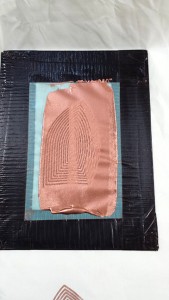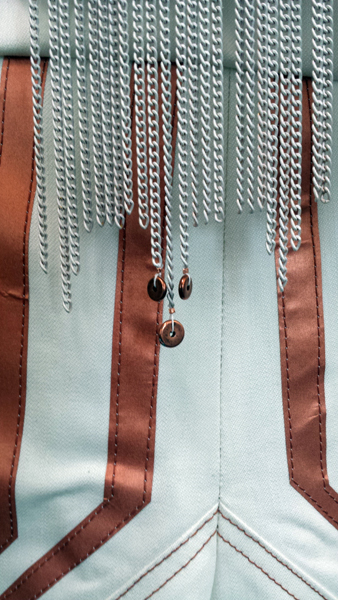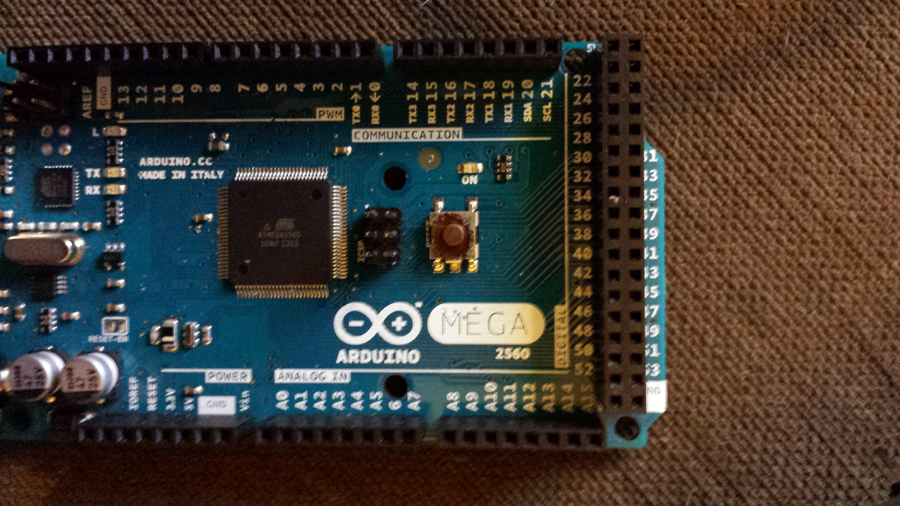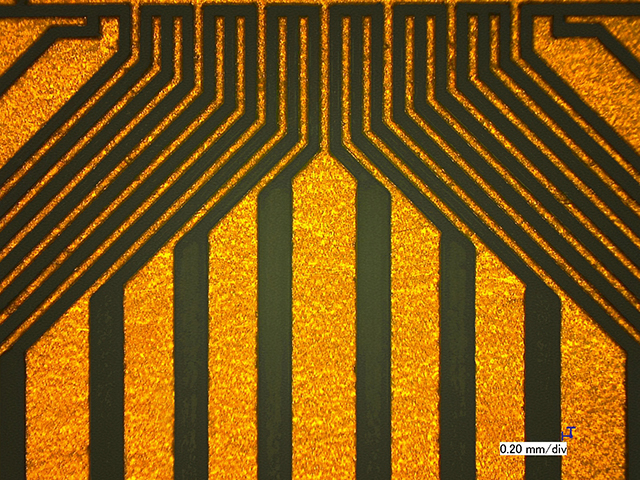1) Describe your final project/studies. What have you accomplished over the course of the semester?
 I had a show! While none of the pieces fully functioned the way I planned, I’m happy to say that I did pull together enough to put on an exhibition that I felt was pretty well received. There was a lot of enthusiasm about both the garments themselves and the technologies integrated into them. I’ll review the final outcome of each garment below..
I had a show! While none of the pieces fully functioned the way I planned, I’m happy to say that I did pull together enough to put on an exhibition that I felt was pretty well received. There was a lot of enthusiasm about both the garments themselves and the technologies integrated into them. I’ll review the final outcome of each garment below..
Inflatable dress:
I was very happy with the overall silhouette of this piece. The fundamentals of the CO2 inflation system worked perfectly and the effect was awesome. Unfortunately, the electronics of the piece ceased functioning in the 11th hour, so the piece as shown in the exhibition was triggered manually.
Speaker coat:
In the end, I had to abandon the textile speakers. I was simply unable to get them to be loud enough for this application. I was able to harvest some small, rechargeable speakers that fit great in the collar and had great volume. The Lillypad MP3 didn;t end up working for me, as I was suddenly no longer able to upload code to the board, so the finished product simply played music, rather than being triggered.
Hoodie sweater:
This piece was one of my biggest disappointments. The sweater panels that Dennis knit for me are unbelievably gorgeous and the sweater itself came out perfect. But, it turns out that at some point during the process one of my servo motors stripped a gear and was no longer able to fully rotate. Since the electronics of this piece had already been tested months previous, I made the mistake of leaving the final assembly and testing of this one until the end, at which point I didn’t have any resources to replace the motor. The exaggerated silhouette created by the hood frame no longer made sense without the mechanics, so I decided to remove the framework and show the sweater on its own.
LightPrint top:
This piece actually got closest to where I intended. The 3D printing via Shapeways didn’t work out, so I ended up printing the neck piece in flat sections using a flexible PLA filament and I was very pleased with the outcome. As I suspected, the LED strip lights weren’t as bright as I wanted, keeping the lighting effect concentrated around the neck rather than diffusing through the entire garment. The elimination of the PIR sensors from the other pieces combined with the challenges of coding an analog interrupt led me to pull the sensor from this piece as well. Instead, I coded a continuous, soft rainbow fade.
Spines top:
This piece ended up eating a lot of my time and was ultimately the one I was unable to show. Once I started casting the spines, I quickly realized that I didn’t have the time to make the 400+ I would need for the top. I changed track and developed a version of the top that utilized plastic zip ties as the spines. This showed a great deal of promise in testing and I started working on the first spine panel for the top. Unfortunately, after 4 hours of assembly I only had about an inch & a half of finished work. At that point I set the project aside in favor of the other pieces. I’ve already mentally reworked this piece to make it a little more achievable, so I’m looking forward to completing it in the near future.
2) Describe your overall feelings about the project/studies. Are you happy, content, frustrated, etc with the results?
I think it’s clear that I had some significant frustrations with this project. I’m incredibly disappointed that I was unable to achieve the final outcome I intended. However, I am proud that I rallied to an extent and was able to put forward a complete collection.
3) What were some of the largest hurdles you encountered over the semester and how did you approach these challenges.
Obviously, time was the enemy this semester. The biggest challenge was the time I lost to my husband’s recovery, both the weeks where I was home with him and the ongoing challenges of his changed day-to-day needs. This put me in a situation where I was simply unable to dedicate 100% of my time to this project and that bit me in the end.
My other hurdle was my own enthusiasm as compared to my level of knowledge. I was trying a lot of different techniques and pursuing a large variety of new skills/technologies simultaneously and I think I got a little overwhelmed, especially once it was crunch time. One of my ongoing challenges is that I know enough about the tech to get started and explore, but not enough to effectively troubleshoot once issues arise. I’m looking into pursuing some collaborations in the future that would allow me to take my work further.
4) If you had more time, what would you do next on your project/studies?
Fortunately, this isn’t a matter of “if.” My plan is to complete these pieces to their intended outcome this summer and then hire a videographer to document the work on actual human bodies. I think this will help get across the intention of the pieces more effectively.
























